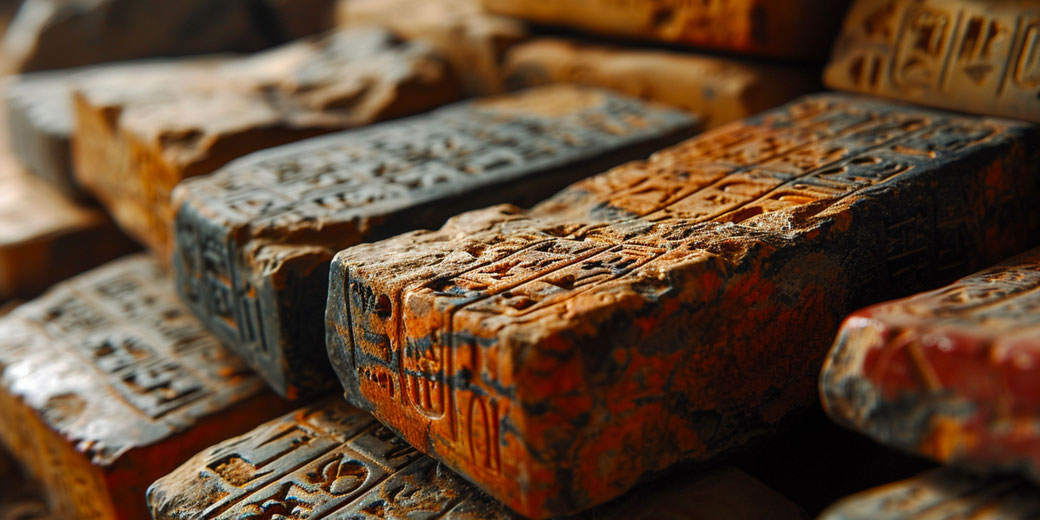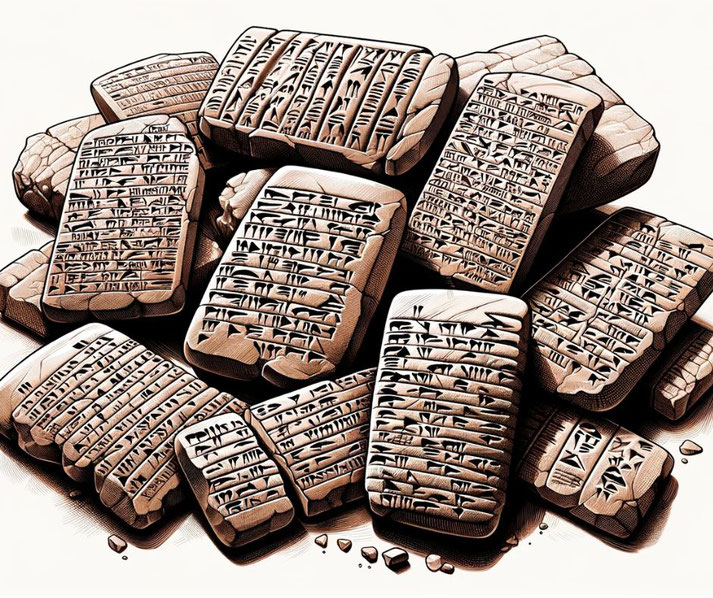The remarkable discovery of the Amarna Letters, the personal correspondence of the pharaohs

The Amarna Letters, a collection of clay tablets inscribed with cuneiform script, represent one of the most significant discoveries in the study of ancient Near Eastern diplomacy.
Unearthed in the late 19th century at Amarna, the capital city built by Pharaoh Akhenaten of ancient Egypt, these tablets offer a rare and detailed glimpse into the diplomatic communications of the 14th century BCE.
The significance of these letters lies in their content, which illuminates the political, economic, and social dynamics of the Late Bronze Age, particularly among powerful kingdoms and emerging states.
When were the Amarna Letters written?
The Amarna Letters is intricately linked with the Amarna Period in ancient Egypt, a time of profound political and religious change.
This period, spanning approximately from 1353 BCE to 1336 BCE, was marked by the reign of Pharaoh Akhenaten, previously known as Amenhotep IV.
Akhenaten is most renowned for his radical transformation of Egyptian religion, shifting the focus from the traditional pantheon of gods to the worship of a single deity, Aten, the sun disk.
This religious revolution had far-reaching consequences, not only in the spiritual realm but also in the political and administrative aspects of the Egyptian empire.
In the fifth year of his reign, around 1348 BCE, Akhenaten established a new capital city, Akhetaten, known today as Amarna.
This city, located in Middle Egypt, became the center of Aten worship and the political heart of Egypt during his reign.
The construction of Amarna signified a significant shift away from the traditional centers of power and served as a physical manifestation of Akhenaten's religious and administrative reforms.
The Amarna Period coincided with a time of great international upheaval and change in the ancient Near East.
This era, part of the broader Late Bronze Age, saw the rise and fall of several significant empires and city-states.
The Amarna Letters, dating from around 1360 BCE to 1330 BCE, provide a window into this tumultuous period.
They reveal the complexities of diplomatic relationships between Egypt and its neighbors, including the Hittite Empire, Babylonia, Assyria, Mitanni, and various Canaanite city-states.
These correspondences show how Egypt navigated its foreign policy and maintained its influence over vassal states during a time of regional rivalry and conflict.
What language were the letters written in?
The Amarna Letters consist of clay tablets inscribed with cuneiform, the writing system widely used in the ancient Near East.
This collection comprises around 380 tablets, varying in condition from complete to fragmentary.
The language predominantly used in these letters is Akkadian, which was the diplomatic lingua franca of the time, although a few tablets are in other languages and scripts, including Hurrian and Hittite.
Physically, the tablets are small, mostly around the size of a modern smartphone, though some are larger.
They were made of clay, which, while still pliable, was inscribed with a reed stylus.
Once the writing was complete, the tablets were dried, preserving the text for millennia.
The script used is cuneiform, characterized by its wedge-shaped marks, which were impressed into the clay.
This form of writing was suitable for a wide range of languages in the ancient world and was the medium for a vast array of texts, from literature to legal documents.

What was written in the Amarna Letters?
The correspondence, predominantly diplomatic in nature, cover a wide range of topics that reveal the concerns and priorities of ancient rulers and their states.
A significant portion of the letters involves requests for military aid and support, reflecting the turbulent political climate of the time.
Kings and local rulers often sought assistance against rebellions or external threats, underscoring the fragility and volatility of political alliances and territorial control in the region.
Trade and economic relations are also a prominent theme in the Amarna Letters.
They include discussions about the exchange of goods, gifts, and tributes, highlighting the interconnected nature of ancient economies.
Gold, in particular, is frequently mentioned, reflecting its high value and status as a key commodity in diplomatic exchanges.
These discussions provide insights into the economic practices and priorities of ancient civilizations, as well as the role of trade in sustaining and strengthening diplomatic relationships.
Another recurring theme in the Amarna Letters is the negotiation of marriages between royal families.
These alliances were crucial for establishing and reinforcing political ties between different states and regions.
The letters often detail negotiations over dowries and the political implications of such unions, demonstrating how marriage was used as a strategic tool in ancient diplomacy.

The most famous authors of the surviving letters
A key group of these correspondents were the rulers of various city-states in Canaan, a region that encompassed modern-day Israel, Lebanon, and parts of Syria and Jordan.
These local leaders, often referred to as vassal kings, played a crucial role in the geopolitics of the region.
They included Abdi-Heba of Jerusalem, Rib-Hadda of Byblos, and Labayu of Shechem, among others.
Their letters to the Egyptian pharaohs, primarily Amenhotep III and Akhenaten, frequently requested military assistance and expressed loyalty, while also conveying the complex and often precarious nature of their rule, marked by threats from neighboring states and internal rebellions.
Beyond the Levantine rulers, significant correspondents from major powers of the time also feature prominently.
These include kings of the great empires and kingdoms like Babylonia, Assyria, Mitanni, Hatti (the Hittite Empire), and Alashiya (likely modern-day Cyprus).
King Burna-Buriash II of Babylonia, for instance, corresponded extensively with the Egyptian court, discussing matters ranging from political marriages to trade disputes.
Similarly, letters from King Tushratta of Mitanni and Suppiluliuma I of the Hittite Empire reflect the diplomatic intricacies of the period, including alliances, betrayals, and shifting power dynamics.
The tone of the correspondence varies, with some letters expressing loyalty and friendship, while others convey complaints, accusations, and requests for redress.
This variance in tone and content highlights the complex nature of personal and political relationships in the ancient world.
The letters often include flattering language and expressions of devotion, aimed at securing favor or assistance, reflecting the hierarchical nature of these relationships.

How the Amarna Letters were rediscovered
The first discovery of these tablets occurred in 1887 at the site of Amarna, an ancient Egyptian city known in antiquity as Akhetaten.
This city, established by Pharaoh Akhenaten around 1346 BCE, served as his new capital and the center of his religious reforms.
The site was largely abandoned after his death, leading to the preservation of the tablets in the ruins.
The discovery was made by a local woman who stumbled upon the tablets in the remains of what was once the administrative center of the city.
Subsequent excavations, led initially by local antiquities dealers and later by archaeologists, uncovered the bulk of the Amarna Letters.
The tablets were found in what appeared to be the remains of the city's archive, providing a treasure trove of diplomatic correspondence.
The excavation of the Amarna Letters significantly contributed to the field of Egyptology and Near Eastern archaeology.
Prior to this discovery, the diplomatic relationships and political landscape of the Late Bronze Age were not well understood.
The letters opened a new window into this period, offering firsthand accounts of the interactions between Egypt and its neighbors.
What do you need help with?
Download ready-to-use digital learning resources
Copyright © History Skills 2014-2025.
Contact via email
With the exception of links to external sites, some historical sources and extracts from specific publications, all content on this website is copyrighted by History Skills. This content may not be copied, republished or redistributed without written permission from the website creator. Please use the Contact page to obtain relevant permission.





